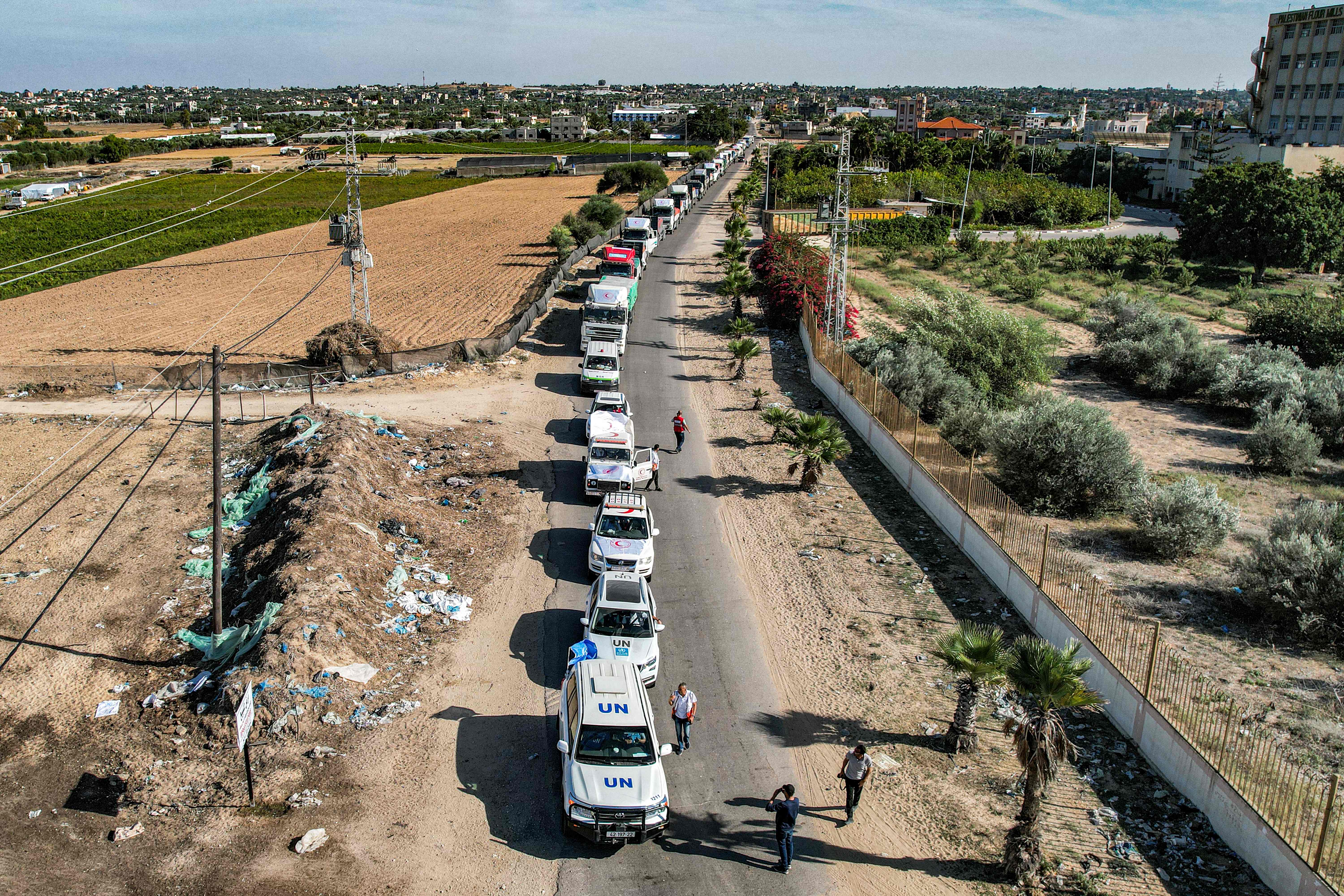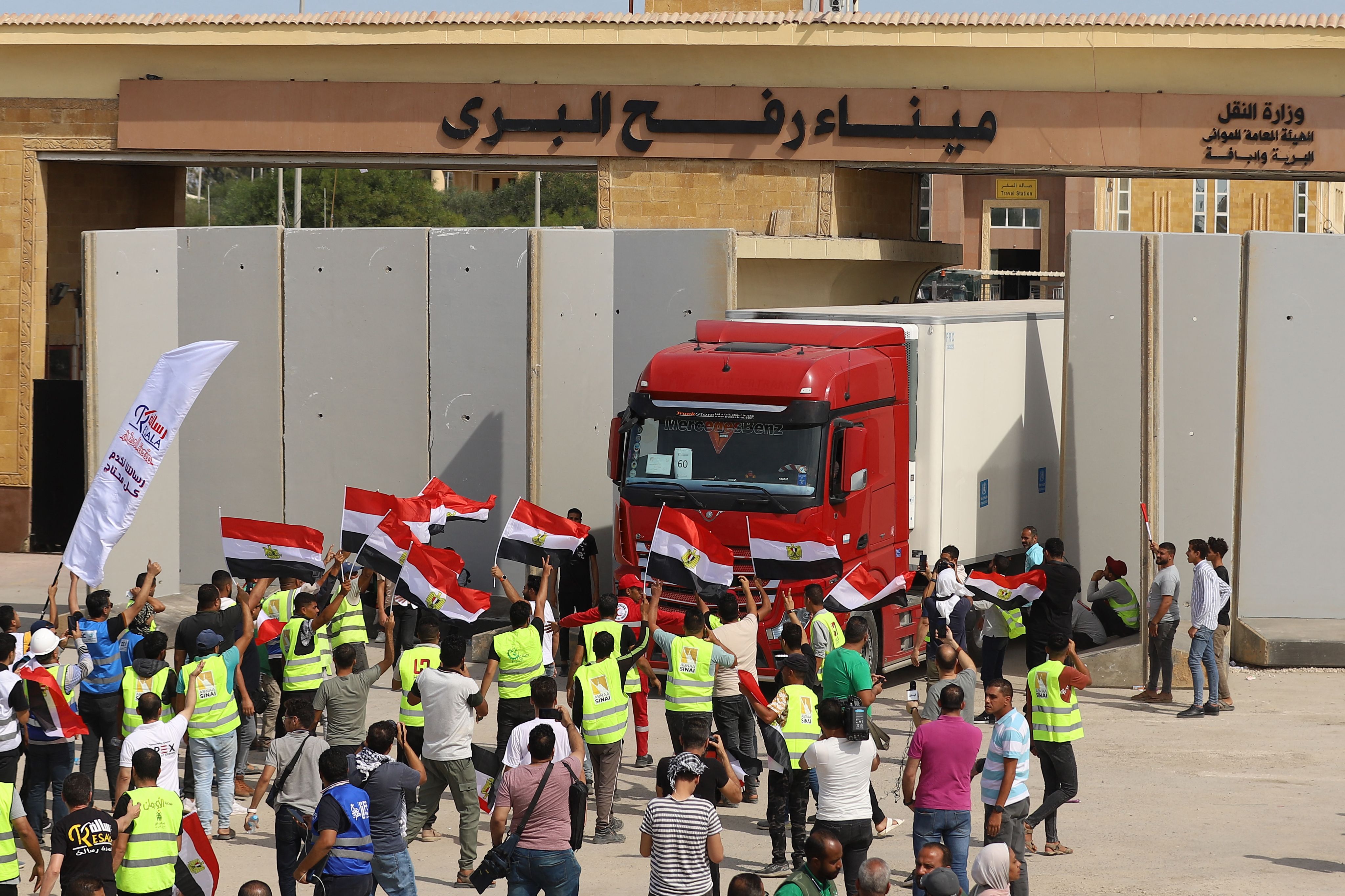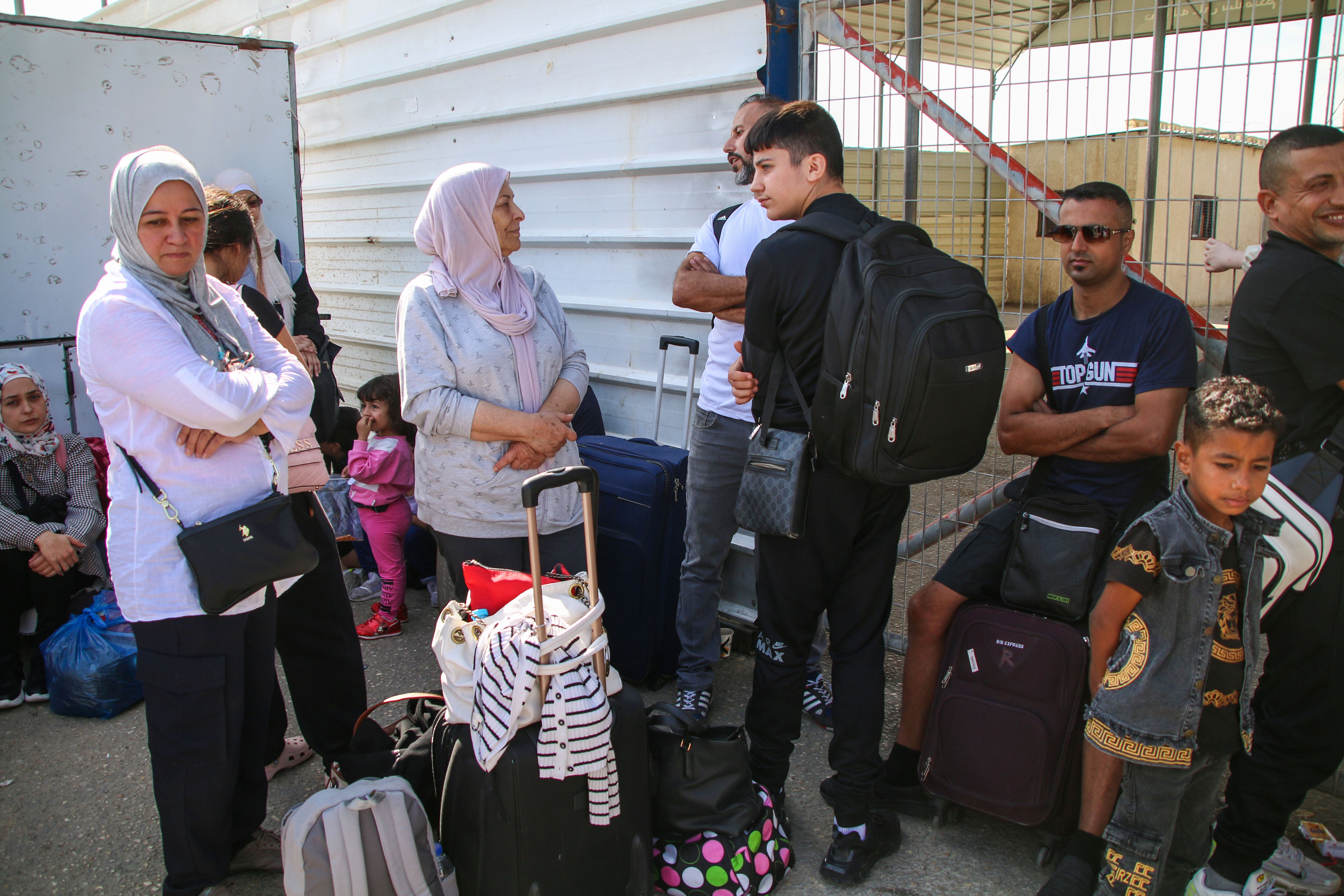Why the Rafah border crossing is vital for humanitarian aid to Gaza
The only way out of Gaza is a crossing point into Egypt that was effectively sealed after Hamas attacks
Your support helps us to tell the story
From reproductive rights to climate change to Big Tech, The Independent is on the ground when the story is developing. Whether it's investigating the financials of Elon Musk's pro-Trump PAC or producing our latest documentary, 'The A Word', which shines a light on the American women fighting for reproductive rights, we know how important it is to parse out the facts from the messaging.
At such a critical moment in US history, we need reporters on the ground. Your donation allows us to keep sending journalists to speak to both sides of the story.
The Independent is trusted by Americans across the entire political spectrum. And unlike many other quality news outlets, we choose not to lock Americans out of our reporting and analysis with paywalls. We believe quality journalism should be available to everyone, paid for by those who can afford it.
Your support makes all the difference.After weeks of being stranded at the border with Egypt, a small trickle of aid workers, foreign nationals, and critical medical patients are being allowed to leave Gaza, Palestinian officials announced on Wednesday.
The only way out of the territory is the crossing point at Rafah, which has been sealed to all but a small portion of aid trucks following the 7 October Hamas attacks on Israel.
Here’s what you need to know about this critical linchpin for humanitarian aid:
Who is allowed to leave?
Officials at the Gaza border ministry on Wednesday released a list of about 500 people who would be allowed to cross, including aid workers from Doctors Without Borders and the International Committee of the Red Cross, as well as foreign nationals from Australia, Austria, Bulgaria, the Czech Republic, Finland, Indonesia, Japan and Jordan.
More are expected to leave in the coming days.
Egypt is also accepting 81 critical medical patients for treatment, state officials said.
After persistent criticisms that the US wasn’t doing enough to rescue Palestinian-Americans trapped in Gaza, a small group of Americans were able to cross through the Rafah gate into Egypt, according to US State Department spokesman Matthew Miller.
Roughly 400 Americans are left inside and want to leave, he said on Wednesday, The Washington Post reports.
How much humanitarian aid is entering Gaza from Rafah?
The ongoing war has created a humanitarian catastrophe inside Gaza. More than 1.4m people, over half the territory’s population, have been displaced in the fighting, according to UN officials.
Gaza hospitals have run low on supplies and fuel, relying on emergency generators during the regionwide blackout, leaving several unable to function altogether, the health ministry reported.
“Nowhere is safe and we simply do not have enough essential supplies to provide for the survival of internally displaced people at this scale,” Lisa Doughten, director of the UN’s Humanitarian Financing and Resource Mobilization Division, said earlier this week.
There is no way to leave by sea, with Rafah as the only crossing point.
On 21 October, 20 trucks carrying medicine, supplies, food and water arrived via Rafah, delivering the first humanitarian aid into Gaza two weeks after Israel’s assault began.
The first trucks to enter included medical supplies like trauma bags for first responders as well as 44,000 bottles of drinking water, enough for 22,000 people to drink in a single day, according to UNICEF and the World Health Organization.
The Rafah border opening followed several days’ of high-level international diplomacy during the deepening crisis including visits to Israel by US President Joe Biden and United Nations Secretary General Antonio Guterres.
Prior to President Biden’s meeting with Israeli Prime Minister Benjamin Netanyahu, Israel had refused to allow any flow of aid to Gaza until the release of hostages kidnapped by Hamas.
Since then, the pace has risen to up to 80 trucks per day, though humanitarian groups have stressed that the aid is a drop in the bucket for more than two million people facing exhausted emergency rations and little water in Gaza. The UN says at least 100 such truck deliveries a day are needed to keep pace with the crisis, The New York Times reports.
Deliveries of other crucial supplies like gasoline, used to power hospital generators and other critical infrastructure amid the devastation to Gaza’s electric grid, remain prohibited.
Is the Rafah border crossing safe?
The US Department of State anticipates that the border “will remain fluid and unpredictable” during the crisis, according to travel guidance for Americans who may still be trapped in Gaza.
“If you assess it to be safe, you may wish to move closer to the Rafah border crossing – there may be very little notice if the crossing opens, and it may only open for a limited time,” according to the State Department.
“We urge all parties to keep the Rafah crossing open to enable the continued movement of aid that is imperative to the welfare of the people of Gaza,” US Secretary of State Antony Blinken said earlier this month.
Israel has struck the crossing at least four times since the outbreak of war.
The US administration is working with officials in Israel and Egypt to move American citizens and their immediate family members out of the region, with assistance from the US embassy in Cairo.

Is the US supporting aid to Gaza?
The Biden administration has pledged $100m in humanitarian aid to Gaza but international relief agencies have urged that much more is desperately needed.
“The United States remains committed to ensuring that civilians in Gaza will continue to have access to food, water, medical care, and other assistance, without diversion by Hamas,” President Biden said in a statement on 21 October.
“We will continue to work with all parties to keep the Rafah crossing in operation to enable the continued movement of aid that is imperative to the welfare of the people of Gaza, and to continue working to protect civilians, consistent with obligations under international humanitarian law,” he added.

What is the history of the Rafah crossing?
The crossing at Gaza’s southern border with Egypt separates the region from the Sinai desert. It remains the only portion of occupied Palestinian territory that Israel does not effectively control, though Israeli military patrols the skies and has continued to bomb the area. Normally, only Gaza residents with permission and foreign nationals can use the crossing to travel between Gaza and Egypt.
Following a 1982 treaty between Egypt and Israel, the state withdrew from the Sinai Peninsula it had controlled for nearly two decades.
Israel then opened the Rafah crossing, which came under its control until 2005. In the two years that followed, prior to Hamas’ takeover of Gaza, roughly 450,000 people used the crossing.
Border restrictions on people and goods into the region significantly tightened in 2007. An attack on border fortifications in 2008 prompted the movement of 50,000 Palestinians from Gaza into Egypt for food, fuel and other supplies.
An average of 27,000 people crossed the Rafah border each month according to United Nations data from July. Up until that month, the border was open for 138 days and closed for 74 days this year.

Rafah’s crossing is now formally controlled by both Egyptian and Palestinian authorities in Gaza. Israeli airstrikes have recently struck areas along the border including designated safe zones where Gaza residents were instructed to move amid ongoing bombardment campaigns, according to The Associated Press.
Egypt has sought to prevent a large number of Palestinians from entering its country over fears of further destabilisation. Instead, Egyptian officials have pressed Israel to commit to allowing aid into Gaza.
“Of course, we sympathize. But be careful, while we sympathize, we must always be using our minds in order to reach peace and safety in a manner that doesn’t cost us much,” Egyptian President Abdel-Fattah el-Sisi said last week.

Join our commenting forum
Join thought-provoking conversations, follow other Independent readers and see their replies
Comments